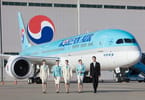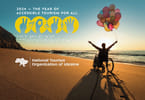BANGKOK (eTN) – This could have been a very funny story in Malaysia if the polemics developing around a national Malay dish did not exude hints of racism. Nasi Lemak is one of Malaysia’s tastiest dishes. It is widely available, sold in any good Malay restaurant or food stall. It consists of fragrant rice flavored with coconut milk accompanied by a fried egg, beef or chicken marinated in deliciously-spicy gravy, and accompanied by dried fish, peanuts, and a kind of onion dumpling (called “begadel”).
A couple of years ago, Kampung Bahru district in Kuala Lumpur – probably the last old-style Malay enclave in the city center – used to have one of the best places for nasi lemak (I personally used to go there often). People were queuing all night long to savor the delicacy at a small restaurant called “Nasi Lemak Antarabangsa” (“Nasi lemak International”). Since then, the owner changed, and the recipe sadly changed as well.
Just to highlight that Nasi Lemak can be considered as one of the top favorite dishes in the country, in Malay, “nasi lemak” means “fat rice” and this is where polemics started. On April 26, Malaysia’s Ministry of Health issued new guidelines to promote healthier food in school canteens. Nasi Lemak was part of 70 food items restricted or banned. It does not look that radical: Malaysia’s favorite dish can still come on school kids’ menus twice a week. So much also for Laksa (a kind of curry flavored soup eventually cooked with coconut milk), and another famed dish, the nasi goreng (fried rice); also restricted to once a week were curry mee (noodles), lotong (rice compressed cake), and nasi pulut (black glutinous rice, stunning in desserts).
The list was published following a study from University Kebangsaan Malaysia, which looked at the cause of obesity. It showed that obesity among pupils had increased from 11 percent in 2002 to 13.3 percent in 2008. The study demonstrated also that nasi lemak, fried noodles, and chicken rice were schoolchildren’s favorite foods, while burgers were the most popular fast food (34.4 percent) followed by fried chicken (26.5 percent) and pizza. Most of them being of course high-calorie dishes.
It could have gone unnoticed, but in today’s Malaysia, anything can turn into polemics. Pointing out the symbolic nasi lemak as one of the sources to children’s obesity infuriated the Malay community. Beyond the kind of sentimental link to this humble dish, many people felt the advice carried a racist undertone as it targeted a typical Malay dish. Some readers in local newspapers started then to ask why kway teow (a delicious dish of Chinese flat noodles fried with chilies), mee hoon (tiny noodles), or roti canai (Indian crepe) did not faced similar restrictions. In readers’ comments in the New Strait Times, some Malays draw a line with the fact that the current Health Ministry Seri Liow Tiong Lai is Chinese and that the semi-ban was politically motivated.
Singapore daily, the Strait Times, in its edition on May 2, cited another newspaper from Kuala Lumpur’s “Utusan Malaysia,” which wrote that the move to take nasi lemak out of the schools was even “racially motivated.” The newspaper questioned, in fact, why other snacks were not banned in the same way with the comment that “perhaps these snacks manufacturers are non-Malays.” It is indeed quite true that Chinese-style fried noodles such as Kway Teow are probably as calorific as nasi lemak.
The polemics might have at least a positive outcome: it will boost the interest for Malaysian food as some curious travelers might desire to understand all the fuss about nasi lemak by having a bite of it. Coincidentally, as Malaysians were weighting the pro and contra of the famous dish for school kids, Tourism Malaysia announced in Dubai to intensify promotion programs abroad on Malaysian food and culture, with special culinary weeks to be organized all around the world to boost tourists’ interest. A festival of Malaysian Food and Culture took place during the Arabian Travel Market at the Shangri-La Dubai with locals able to taste satay, laksa, mee goreng, and the famous nasi lemak.
WHAT TO TAKE AWAY FROM THIS ARTICLE:
- Coincidentally, as Malaysians were weighting the pro and contra of the famous dish for school kids, Tourism Malaysia announced in Dubai to intensify promotion programs abroad on Malaysian food and culture, with special culinary weeks to be organized all around the world to boost tourists' interest.
- it will boost the interest for Malaysian food as some curious travelers might desire to understand all the fuss about nasi lemak by having a bite of it.
- Beyond the kind of sentimental link to this humble dish, many people felt the advice carried a racist undertone as it targeted a typical Malay dish.






















